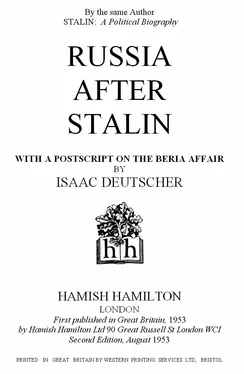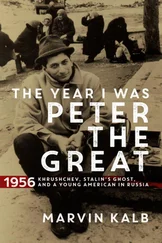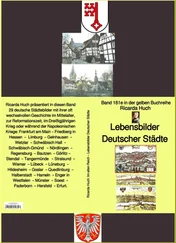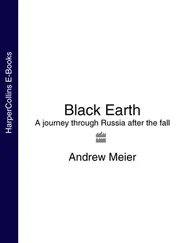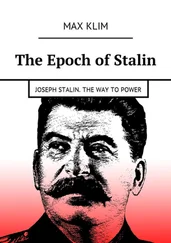The impressive results of Stalinist planning should not cause incredulous surprise in the West. After all, the West, too, has learned from its own experience about the advantages of planning, even though it has so far planned its economic resources and activities only sporadically, and under the stress of war. It is enough to glance at the industrial statistics of the United States and of Great Britain to realize that in this century both these nations developed their industries at an incomparably faster rate during the few war years, when they adopted some elements of planning, than during whole decades of uncontrolled economy in peace. In both countries the economic story of the two inter-war decades (1919-39) is one of overall stagnation compared with the great expansion of 1940-4.
According to the Federal Reserve Bulletin (February 1953, p. 161) the overall index of American industrial production, taking the level of output in 1935-9 as 100, oscillated around this level for two decades, declining steeply in years of depression and rising only slightly above it in years of prosperity and reaching the highest point, 113, in 1937. It took the Second World War and some planning to send the index of production soaring to 239 in 1943.
Is it to be wondered at that Russia's comprehensive planning over a quarter of a century has shown cumulative effects? True, even Russia's top planners had to train themselves on their jobs. They committed many monstrous mistakes, for which the nation and the State had to pay. But they also gradually accumulated experience and perfected the technique of planning. In recent years their work has consequently shown much more self-confidence and efficiency than it did in the 1930's.
The test came after the cease-fire of 1945, when Russia's wealthiest (western and southern) provinces lay in ruins, their cities razed, their coal-mines flooded, and their factories demolished. Within four or five years the Russian economy staged a remarkable recovery. How this has affected Russia's power-political position can be seen from the fact that in the opening phase of the cold war Russia's annual output of steel was only one-eighth or one-seventh of America's. It is at present well over one-third; and it is planned to be nearly one-half of the American Output by the middle of the 1950's.
It is time to consider how these economic changes have affected the social climate of Russia.
The Stalin era has been one of rapid urbanization. In the last pre-war decade alone the Soviet town population increased by 30 millions, of whom no fewer than 25 millions were peasants shifted from country to town, a fact which helps to explain the notoriously abominable housing conditions in Soviet cities. Even during the last war a multitude of new towns sprang up in the Asiatic provinces, towns the location of which is not even indicated on ordinary Russian maps. Urbanization was resumed after the war and is still going on, although, naturally, its momentum has slowed down. [10] The present Soviet town population is estimated at 70 millions, nearly 45 millions more than at the beginning of the Stalin era.
The millions of muzhiks turned into modern industrial workers had to be taught to read and write, to handle precision tools, and to understand something of complicated technological processes. They had also to be broken in to the regular industrial rhythm of life; and they had to acquire within a few years the habits of industrial discipline which the West had inculcated into its working classes, by coercion and persuasion, over the centuries.
What this meant will become clearer if it is remembered that the life of Russia's rural population had been entirely regulated by the rhythm of nature, and by a most severe climate. The muzhik had been accustomed to work from sunrise to sunset in the summer and to sleep through most of the winter. A most rigorous, inhuman factory discipline was used to break him of these habits. But towards the end of the 1930's the new discipline had been more or less achieved; and in the closing years of the Stalin era the Soviet Union already had a vast trained, modern labour force, which could be expanded in a less revolutionary and violent manner. The most baffling and cruel job was to accumulate a national fund of industrial knowledge and know how—the accretions were then bound to come more organically and easily. The rapid formation from the rawest human material of this industrial labour force was the most essential part of the so-called cultural revolution of Stalinism.
Technology, planning, urbanization, and industrial expansion are the deadliest enemies of the primitive magic of Stalinism. Russia's rulers could not teach with impunity chemistry, physics, mathematics, medidne, and the use of industrial tools to the children of semi-illiterate workers, wholly illiterate muzhiks, and nomads and shepherds. The rulers themselves made an anachronism of the Stalin cult. They dragged the mind of Russia out of the epoch of the wooden plough and of primitive myth into the world of science and industry; and now they cannot expect it to feel at ease in the stuffy air of the Stalin cult and to accept uncritically its antics.
For social, political, and strategic reasons, Stalinism has carried the industrial revolution beyond the Urals to the Asiatic lands, to the very homeland of primitive magic. There fifty or so per cent of Soviet basic industry and engineering plant is now concentrated. There Soviet Chicagos, Pittsburghs, and Detroits have Sprung up in an environment which even in this generation was not much different from the cultural level of the Red Indian communities of early America. The primitive element is still being dissolved, sucked in, and digested by the centres of a fresh and vital industrial civilization. Can one assume for a moment that all this will have no effect on Russia's political mentality?
Modernization has not been confined to the urban population. The town has strongly reacted upon the country. The thirty or forty millions who had migrated or been shifted to the towns during the Stalin era did not lose all contact with their earlier environment. They have been the human channels through which modern civilization has infused itself into the life of rural Russia.
The infusion has been all the more effective because of the simultaneous revolution in the technology of farming and in the social framework of rural life. On the fields the tractor, the combine-harvester, and the lorry have replaced the horse and the ox. The old smallholder, with his conservative self-sufficiency and indifference to the great issues of the age, has given place to the collective farmer, the member of an intricate and interdependent community which is more and more acutely aware of its own dependence on governmental policy, on developments in industry, and on the State of international affairs.
Here again, Stalinism in its very struggle for life and power was committing suicide by slow degrees. At the start collectivization gave Stalinism effective control over the peasantry. However, historically the omnipotence of the centralist Russian bureaucracy was based on the political impotence of an atomized peasantry. As long as the bulk of the nation existed in a politically amorphous state and was inherently incapable of self-organization, the absolute government at the centre enjoyed unrestricted freedom of movement, except at times when it was threatened by urban revolution. In collectivization, as Stalin himself once remarked, there lurks a threat to any centralist bureaucracy, because collectivization concentrates the peasantry's scattered strength and imparts to it a much greater potential power in politics than it had before.
Contemplation of the atrocious methods by which collectivization had been forced on the peasantry should not obscure the fact that with the years the basic structure of collective farming became consolidated and stabilized. In those far-off days of 1929-33, when the party sent out its shock brigades to collectivize the muzhiks' land and cattle, the muzhiks thought that this was the end of the world, as indeed it was for those among them who fiercely resisted and were made to suffer for it. Since then the bulk of the peasantry has somehow adjusted itself to the collectivist framework of its existence and has also found within it some scope for the satisfaction of private interests.
Читать дальше
